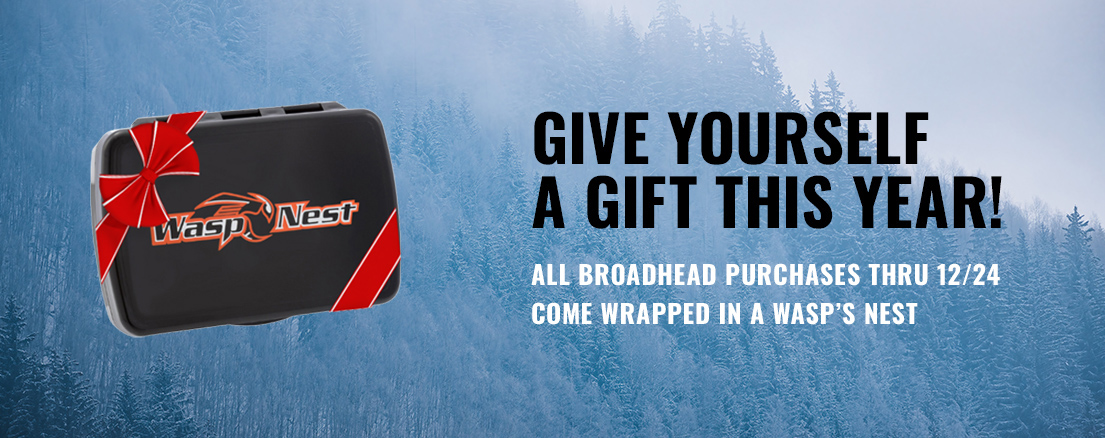The Best Shot Placement For Bowhunting Turkeys
A good hit with a sharp broadhead will bring a gobbler down in seconds, but precision is required
Imagine this: The decoys are set in a pasture, and you’re settled into your ground blind well before daylight. At the first hint of dawn, a thunderous gobble booms from the red pines just 100 yards away. Another tom sounds off from the hardwoods behind you. As a bonus, two other gobblers cut loose in other directions. You’re surrounded by turkeys!
A few yelps from your slate call convince the gobbler in the red pines to sail from his perch. He settles into the pasture, immediately unfolds into full-strut, and begins walking quickly your way. You draw your bow as he closes to within range, but the bird is a blur as he beats up your jake decoy. You’re stressed out because the turkey’s moving so much. When he finally pauses for a moment, you jerk your sight pin into the center of him and punch the trigger. You think the hit looks OK, but the gobbler quickly takes flight and disappears into the tree line. An exhaustive search turns up a handful of feathers, an arrow, and not much else.
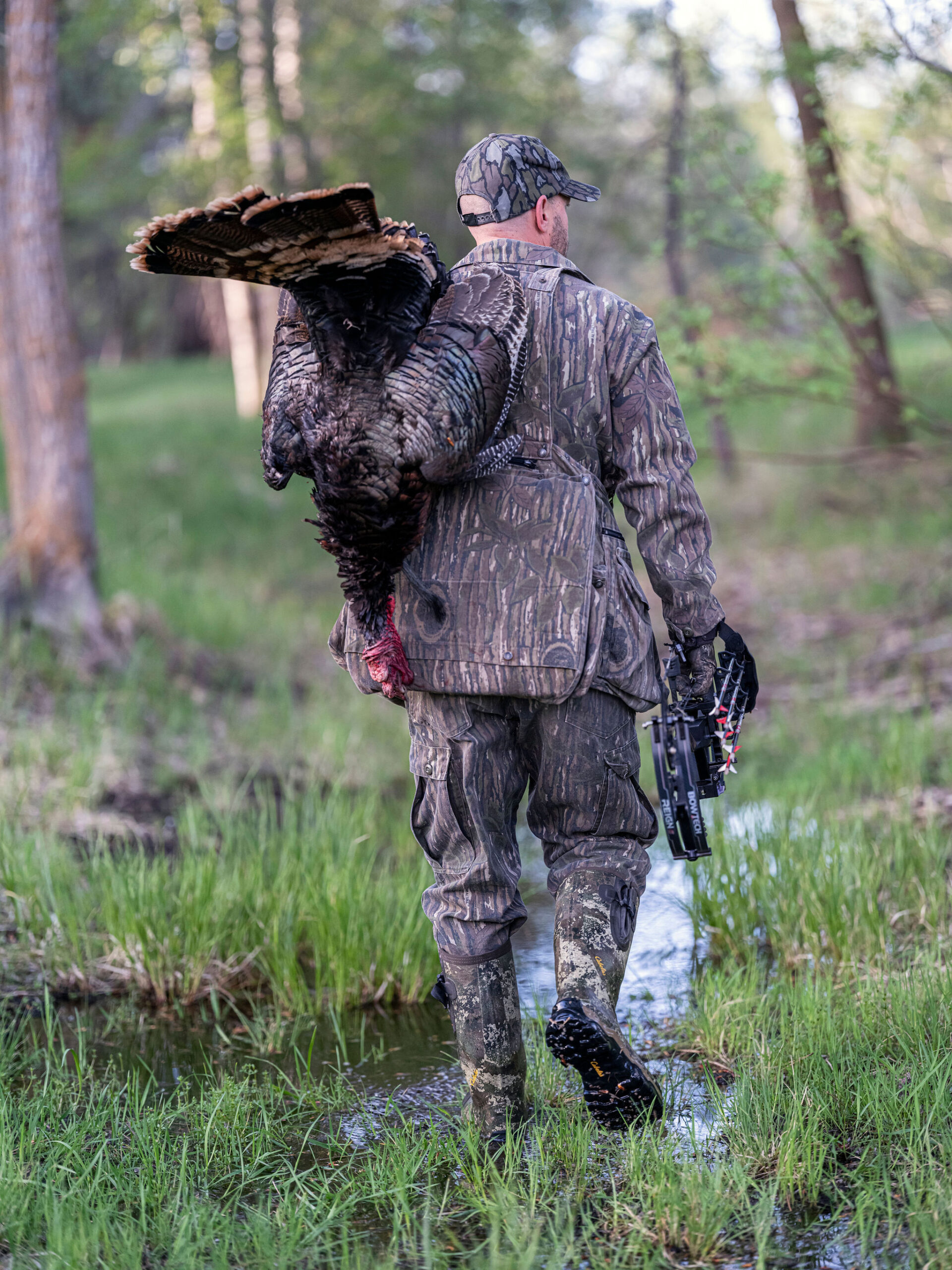
A bowhunter carries his spring gobbler out of the woods.
That’s the sad story many bowhunters face when targeting spring turkeys, but it doesn’t have to be that way. Good shot placement on turkeys means a quick kill and easy recovery. Marginal shot placement often means a sad story and not much else, and it’s stupidly easy to make a poor hit on a gobbler. Why? First, turkeys look deceivingly huge. Second, all of those dark feathers can make it difficult to pick a fine aiming point. Third, turkeys rarely stand still. And fourth, there’s often a sense of urgency when it comes to taking a shot. It’s difficult to pull a tom within point-blank range, and when it finally happens, we don’t want him to get away. So, we shoot too quickly.
What’s the solution? Slow down, calm down, and study the bird’s angle. Wait for him to stand still, and then place your shot as follows.
BROADSIDE
Broadside is a great angle that exposes the bird’s sub-grapefruit-sized kill zone, tucked up underneath the spine. On a broadside and strutting turkey, aim a couple of inches behind the wing joint. Avoid aiming too low; a hit here is nothing but breast. On an alert or non-strutting bird, also look to the top wing point, which is the approximate location of the heart, and then aim a couple of inches behind that for a double-lung hit. Some hunters swear by a drumstick hit because it immobilizes the bird and causes a fast bleed out. It’s a deadly shot alright, but if you miss left or right, your arrow will be too low to hit heart or lungs and will instead contact the breast (forward) or the butt (back), yielding a tough recovery.
HEAD ON
A bird facing directly at you has two prominent aiming clues: the waddles and the beard. On a strutting bird, strike directly between the two and you’ll get the vitals. On an alert, upright gobbler, aim no higher than the top of the beard. Yes, a neck hit that strikes the spinal column is deadly, but if you miss left or right, the arrow will likely glance off the bird and only result in a superficial wound that peels off a gob of feathers. On an upright bird, hit where the beard connects to the body or 1-2 inches lower and you’ll be in good shape.
STRAIGHT AWAY
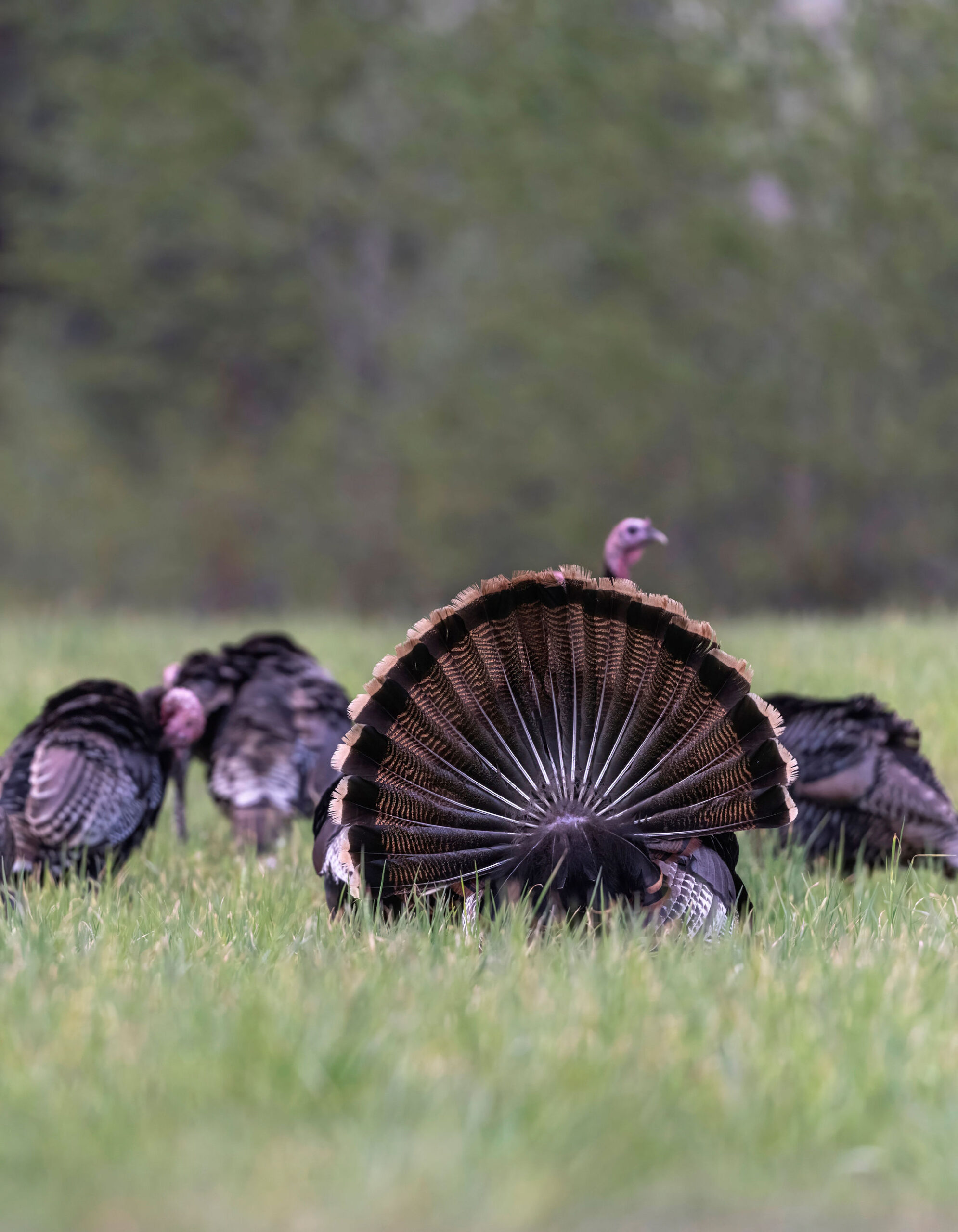
A straight-away strutter provides a good shot opportunity for bowhunters.
On a strutting bird that is truly facing away, watch the legs, not the fan, to determine the angle. Ideal shot placement is where all of the tail feather quills meet. This will blast right through the center of the bird and get the goods. On an alert bird facing away, shoot for the middle of the back between the wings. The wings are layered over one another, so identify the topmost wing feathers and aim where they meet the dark back feathers. This hit is deadly, but it’s often a now-or-never proposition when a bird spooks and walks away from your decoys, or when a bird is wounded and leaving the area.
QUARTERING TOWARD
Never mistake a quartering bird for a broadside bird. Watch the legs. A good rule is to draw an imaginary line between the two legs to the upper third of the bird’s body and aim there. Depending on the degree of the angle, you’re usually best to aim on the point of the wing or slightly in front of it. The beard base is a good height reference.
QUARTERING AWAY
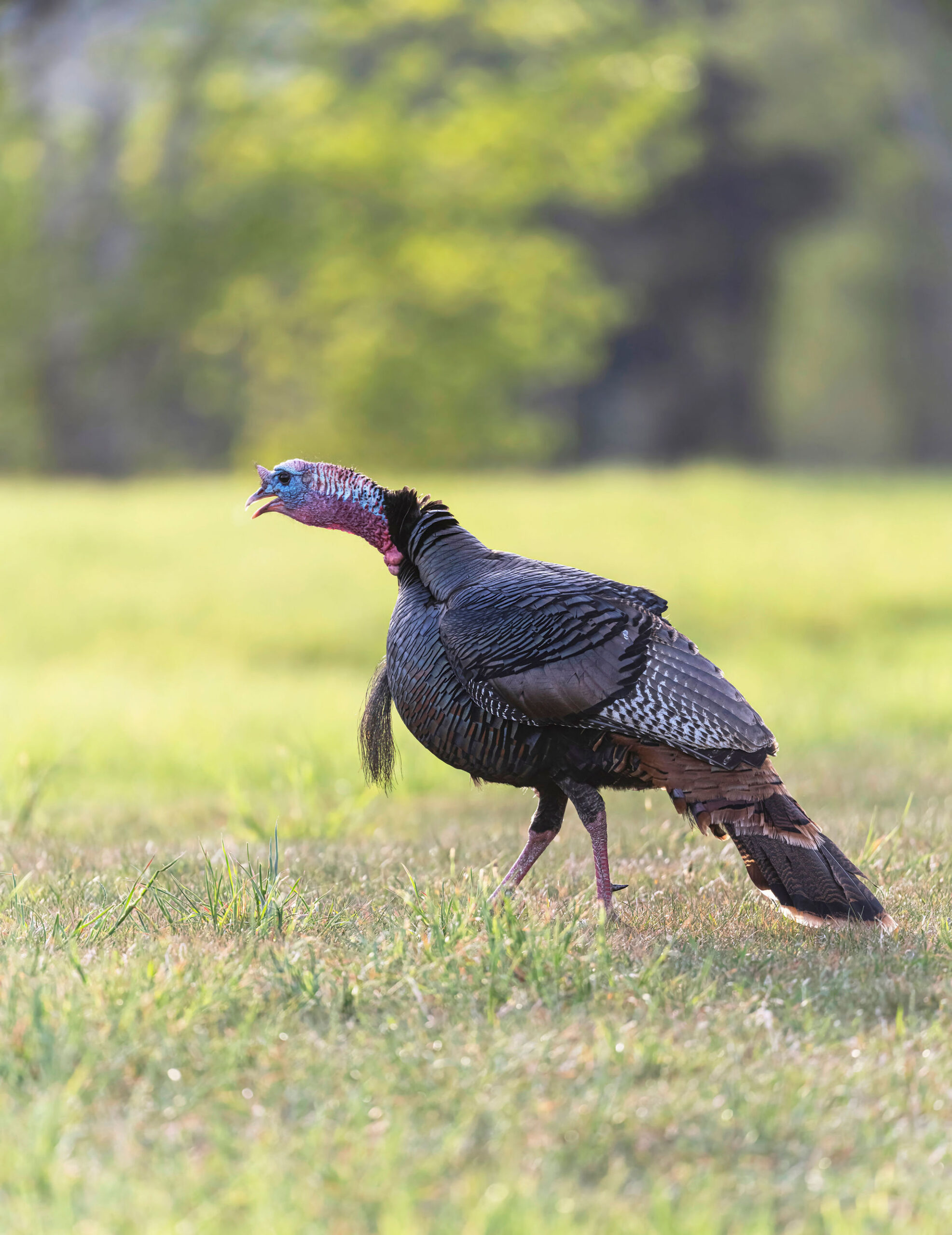
Don’t be fooled. A gobbler that’s quartering slightly away, like this big longbeard, requires a slight aiming adjustment.
Again, watch the legs and draw an imaginary line between them to the upper third of the body, not including the feathers on a strutting bird. The greater the angle, the farther back you must aim. Always try to imagine where the arrow will exit. Don’t shoot too far forward because you’ll only hit breast. If you find this angle confusing, which it can be, just wait for a different angle that you’re more confident in.
BROADHEAD CHOICES
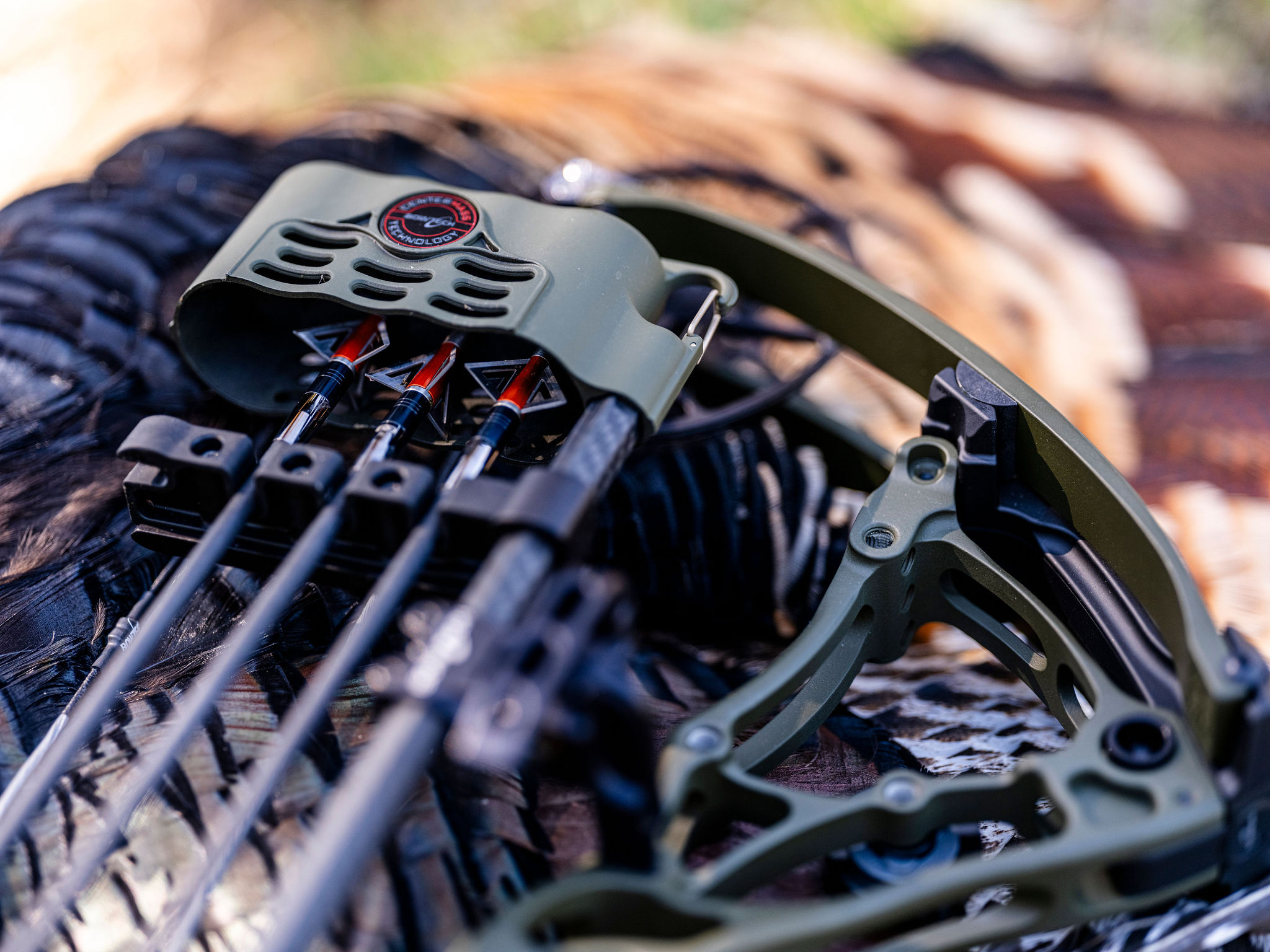
When bowhunting turkeys, both fixed- and mechanical broadheads work well.
In addition to shot placement, broadhead selection for turkey hunting is very important. Fixed-blade broadheads with larger cutting diameters, like Wasp’s award-winning Havalon HV, are a great all-around choice for turkey hunting as well as everything else. But bowhunters shooting 50 or more pounds and an average arrow should consider a large mechanical broadhead, such as the 2-inch Jak-Knife.
That big cutting diameter is more forgiving if you hit an inch or two from where you intend, and the energy that transfers from the arrow to the bird upon impact can knock them off their feet. For lighter setups in the 40- to 50-pound range, a smaller mechanical such as the Jak-Hammer 1 1/4-inch 3-Blade will produce sufficient penetration, but with the advantage of a slightly larger cutting diameter than a fixed-blade broadhead. Traditional archers and others shooting minimum-poundage setups should err on the side of maximum penetration. Use a shaving sharp fixed-blade head such as the Drone, Boss, and Dart. And whatever your setup, slow down, follow these shot-placement tips, and you’ll be well on your way to a springtime turkey dinner.
— Story by Wasp Archery Staff, images by John Hafner Photography
View All Posts